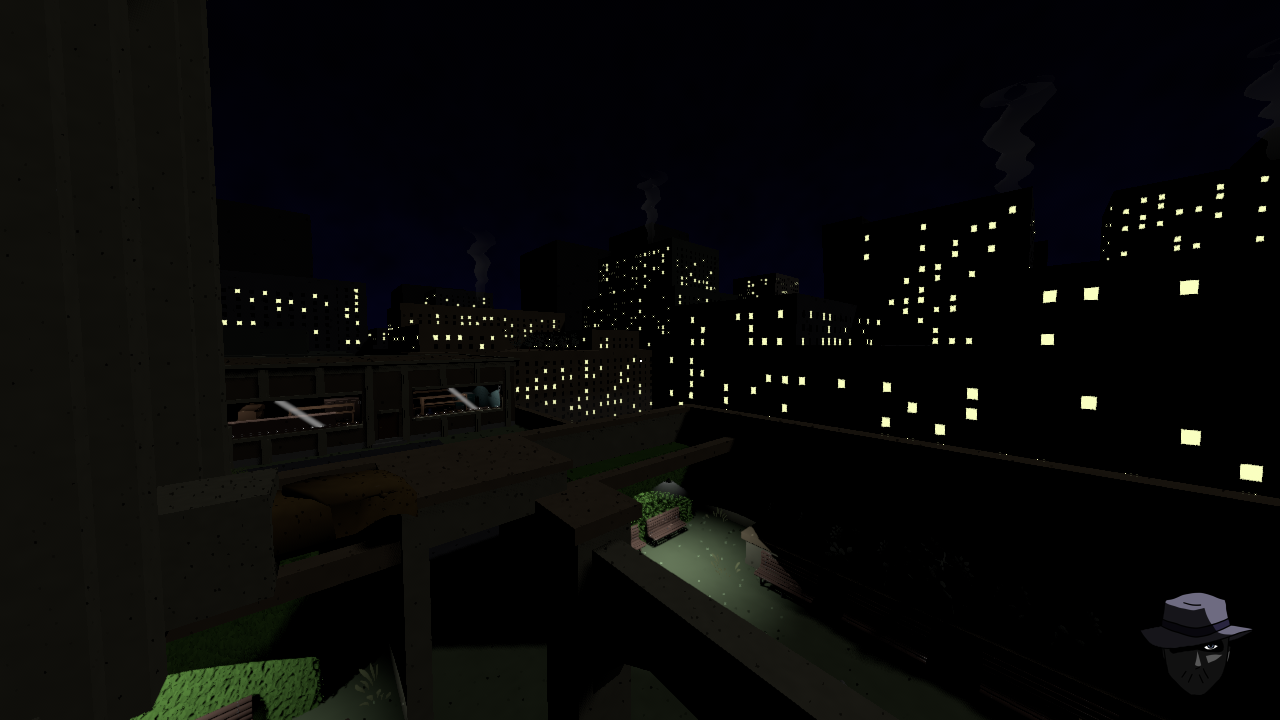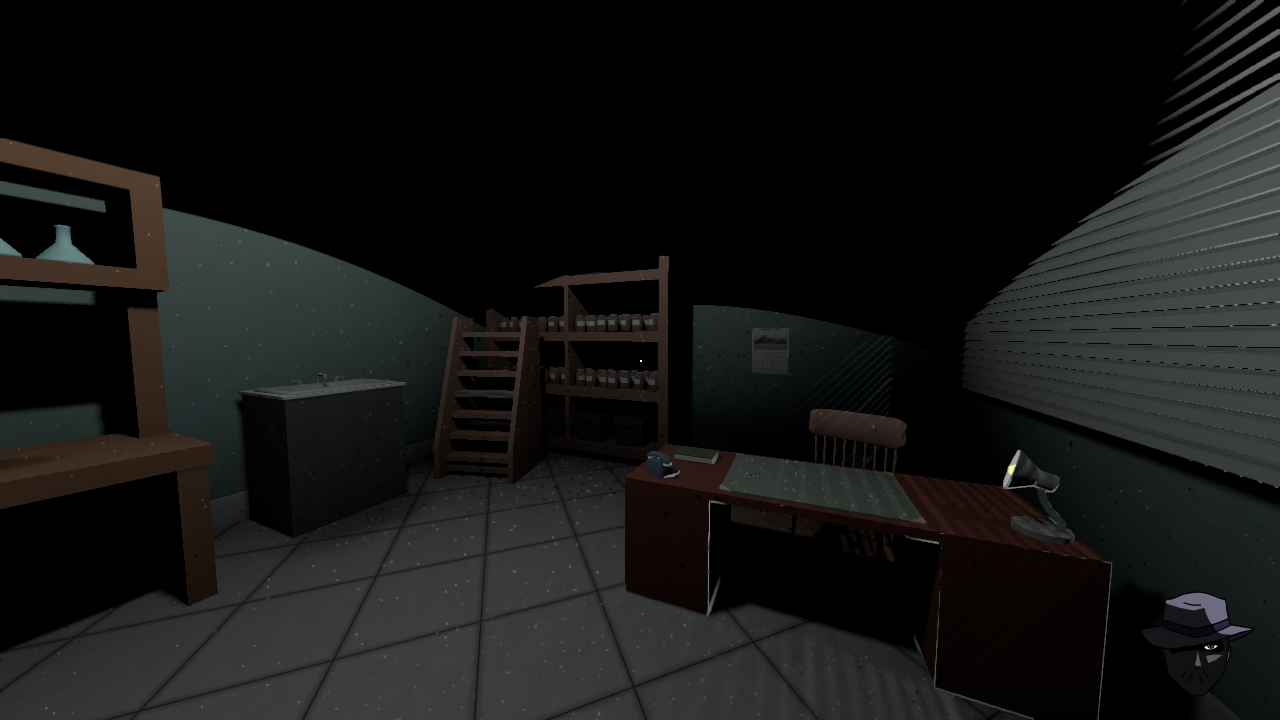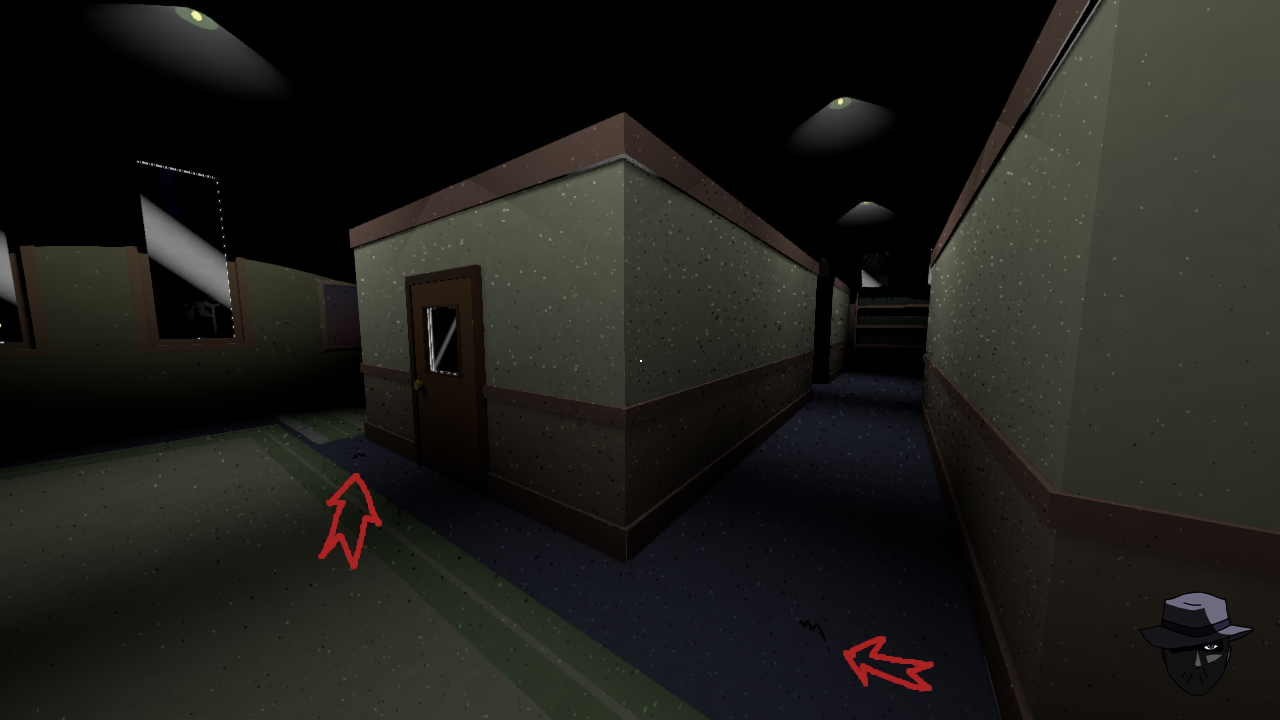Noirmancer August Update: Visuals and Loot
This a monthly development update for my mind-erasing stealth game Noirmancer. I usually give some brief status on how development is going and ramble about some aspects of game dev I've been thinking about.
STATUS UPDATE
These past few weeks I've been going through this most recent level and dressing it up a bit and filling out the loot. Trying to generally get it towards a presentable state so that I can make a demo in the not too distant future. Fortunately, there's not really been any surprises in that. And has largely gone how I expected.

The ideal process for making a game would be making the whole thing in placeholder art first, but I can't deny that it does a lot for my motivation to see a level get to a presentable state. It feels a lot more real. I also kinda feel that presentation affects your feelings about a gameplay experience a lot. It can be hard to really test some games without the aesthetic captured to get the right vibes. Visuals aren't just for eye-candy either, they can be important for gameplay.
VISUAL COMMUNICATION

So like many stealth games since the release of Thief: The Dark Project, my game has some floors that you will make loud footsteps on. It's nice for creating some variation of danger in a space, as long as you don't overuse it. Another danger when using it is making sure it's obvious to the player that the floor they're about to step on is a loud surface. My game doesn't make use of a lot of textures, I'm trying to keep a quite simplistic moody art style where I don't feel that fits. It also happens to save me a bunch of time which is useful as a solo developer. This means lots of floors are just the material that I use everywhere, and therefore, meaningfully distinguishing between a hard surface and a soft surface isn't something I get for free. So I've decided to try building up some visual design language that the player can learn to recognize to help them out.
If you see some kind of diagonal detailing on a floor surface, that surface will almost certainly react to your footsteps in some notable way. Diagonal tiles are the obvious one. I'm not entirely settled on it yet, but I'm also trying out using these little tufts in carpeted areas to try to suggest some slightly worn down carpet fibers:

The idea is to put these in anywhere where the surface changes to help the player identify what they're getting into.
DESIGN RAMBLE
Y'know, I imagine there's someone out there working an office job, staring at excel all day and hating spreadsheets, who loves video games and wishes they were making video games. Well, hypothetical person, I have some bad news: You may end up spreadsheeting anyway. Creative work is all about decision making, and you need some basis to make your decision otherwise you're just kinda thrashing around. And when that design involves numbers, that means accounting. And accounting means spread sheets.
I feel like the roll of spreadsheets in game design is a little unknown to most game players. So I'm gonna ramble about it.
LOOT POPULATION, AKA: SPREADSHEETING
In my game one of the bread-and-butter mechanics is looting, specifically, stealing "intel". Each level has an intel goal you have to reach to finish it. Fairly standard stuff, inherited straight from Thief: The Dark Project. But that introduces new questions: how much intel you should add, and how much should the goal be? Some of this is partially answered in kinda obvious and intuitive ways: if you have large areas inside with no loot, that probably is gonna feel wrong, so make sure to fill up that space a bit. If it's particularly hard to get into an area, the player is gonna be expected to be rewarded so put some darn loot in there. But the goal number doesn't really have an immediate obvious answer, but I have a current theory I'm going by.Some loot in the game is simply expected. It's out in the open on the critical path, and there's minimal chance you'll miss it. So I list out all the intel in the level in a spreadsheet, and I mark whether or not I expect the player to find that intel, and all the expected intel is pooled into a base "expected amount". This is the absolute floor for the loot goal, and now the question is how much of the non-expected stuff do I want to ask the player to find. 100% is probably the wrong choice in most games. You could pick a simple ratio like 50% or 70% of the optional stuff and move on. For now I'm doing something a little more complicated. Currently there's only really two "sizes" of intel in the game. Common """trash""" loot that is worth 5 points, and "big" loot that is worth 25. Now, outside of "expected" big intel on the critical path, all the other big intel is behind some kind of optional challenge. Hard to find, requires finding some key, finding some way in, requires interpreting a clue. You get the idea. Now, depending on the ratio of optional big intel to optional trash intel and the target number you pick you will get slightly different gameplay experiences. You have to ask yourself what do you want the game to be like, what play-styles do you want to facilitate.
Personally, I like the idea that a player can do all the tough stuff or at the extreme other end they can be really thorough about the easy stuff. This makes intuitive sense to me. It's basically a soft difficulty system. If you find the game kinda hard, well you can focus on being thorough rather than figuring everything out and you'll probably reach the intel goal easily enough. But if you find combing over rooms for individual loose notebooks and business cards really boring, well then you can just focus on the tougher stuff.
This produces two equations, one is that the total of optional trash should be fairly equal to the total of optional big stuff, and the goal should be the expected total plus half the optional total. That half could either be all the trash or all the big stuff, or a mixture of the two. It doesn't matter. With that design decision made I've now made it much easier to think about whether or not a level has enough intel. Just do the accounting and check that the equations are balanced, and check that there aren't areas of the map that feel like they should have more stuff. If you add more trash you should probably add more stuff behind challenges, and vice versa.
So what's next
So, this level is finally broadly wrapping up. I'm sure I'll find some random stuff I want to change but it is a playable level. Next up I want to design out and build a short little tutorial, that also acts as the hook into this mission. In terms of working towards a first little public demo, here's what I'm thinking about:
- Make a short tutorial level
- Make some semi-okay start screen (the current one is a black screen and two buttons, lmao)
- I currently only use one set of NPC graphics, I'd really like to have another 2 before releasing the demo but it might be better to just swallow my pride
- I feel like I'd like to replace/expand the vocal sounds I currently use for the NPCs, but I may just end up skipping that.
- Make an ability menu that works with only the few abilities that'll be featured in the demo.
- Any random changes to the level that I think will really make a difference, particularly based on some private playtesting.
Follow along
Wishlist the game on Steam. You can follow this project via RSS (Don't know RSS?), or by following me on Mastodon. And of course feel free to contact me via email, or Mastodon with any comments or questions.